Let's get brutally honest …
This is not Dressage. It's abusive riding. It's unharmonious riding. It's riding with physical force and coercion.
But the one thing it is not is Dressage.
Dressage is French for training .. not pulling on the reins, spurring the horse, riding him behind the vertical because you can't safely ride him in front of the vertical. It isn't riding your horse in a posture that breaks down the rest of his body at an early age.
Be careful what you visually absorb while browsing the internet. Images are powerful influencers and could be sub-consciously shaping your expectations of what good horsemanship looks like.
Update 07/03/16: As some readers have commented that foaming at the mouth is some great, special achievement to be desired in dressage, I feel the need to clarify the difference between good froth and bad foam.
Good Froth in dressage is what happens when the horse lightly mouths the bit and can be a sign of acceptance. The following images are good examples of good froth, which should appear like lipstick on the horse's lips. Also important to note that this can be achieved WITHOUT a bit.
Bad Foam in dressage is typically what we see happening in top-level competition — a large amount of foam, so much so that it's not uncommon for the horse's chest to be covered in it. THIS TYPE OF FOAM IS BAD AND A SIGN OF TENSION IN THE HORSE.
There is a popular trend among horse-lovers, that of romanticizing bad horsemanship. Beautiful images with special filters and dramatic angles, showing the horse in distress due to his rider.
Avoid promoting this visual support of horse abuse by being more careful with the images you share and making certain the commentary correlates with what is being represented in the image.


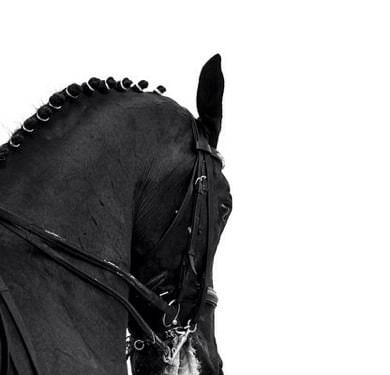


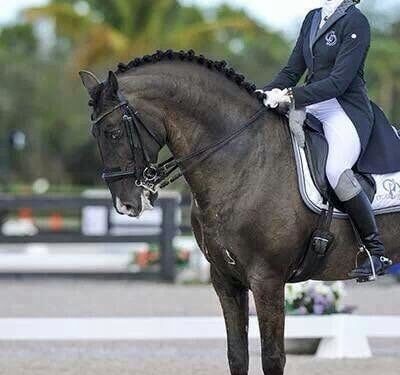
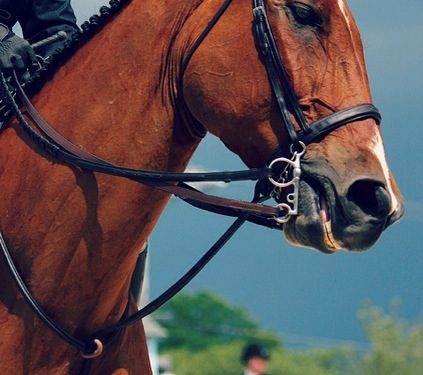

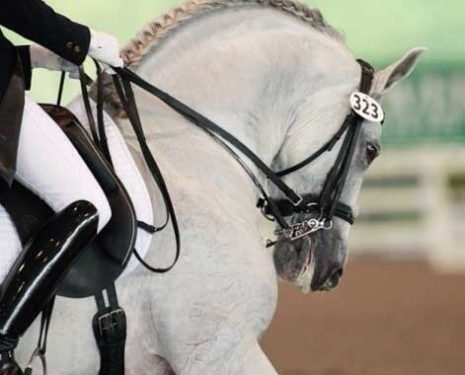
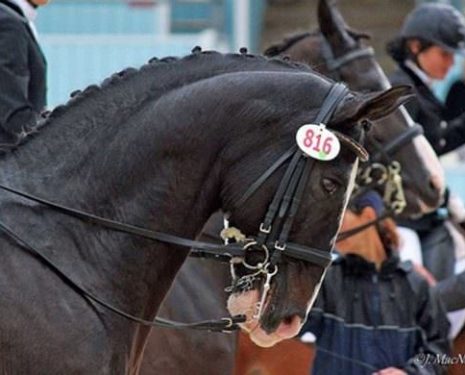
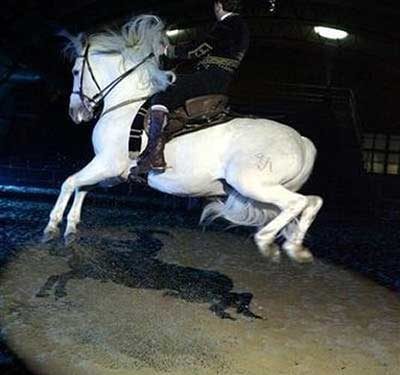
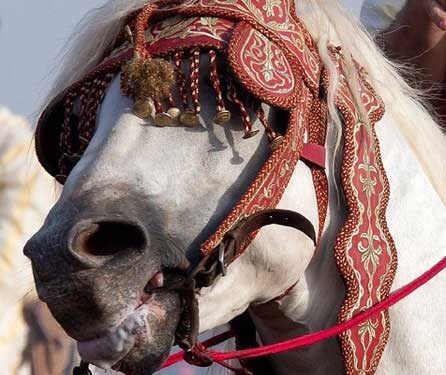
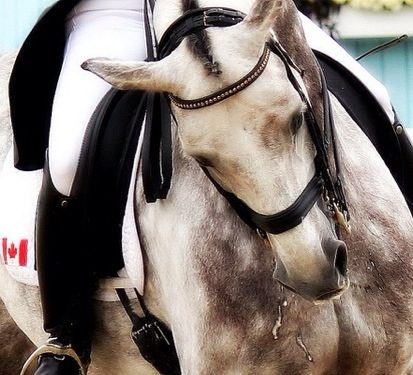
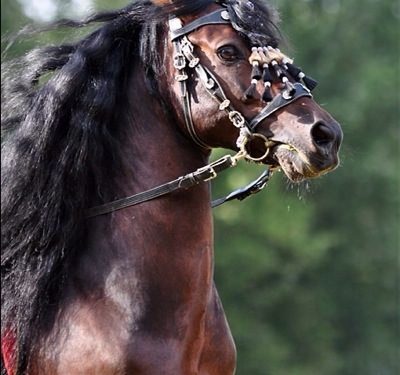
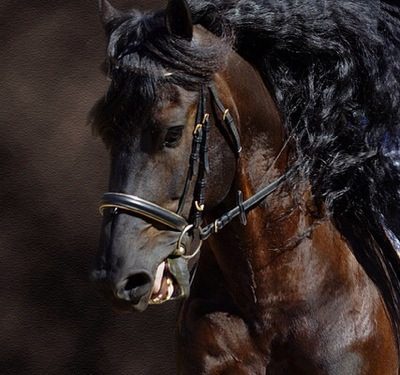
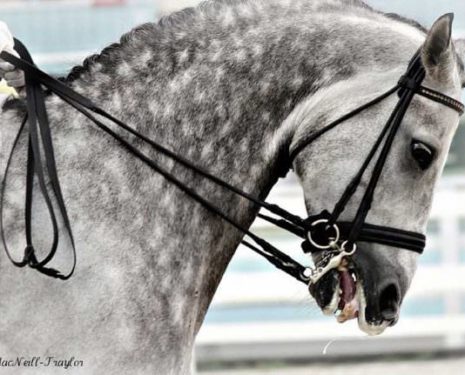
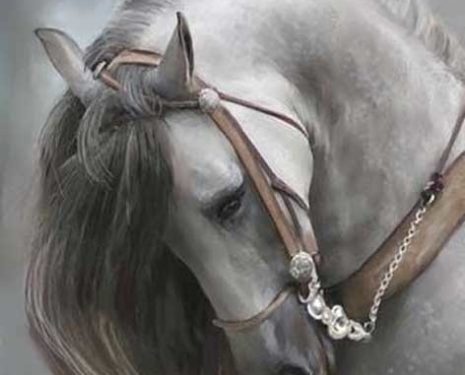
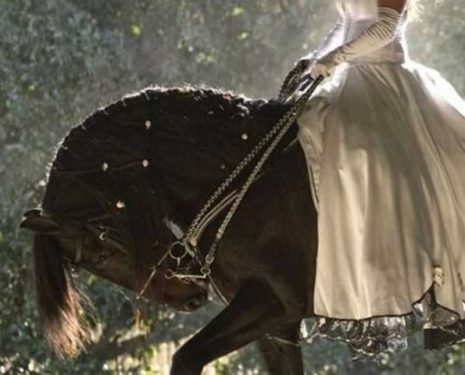

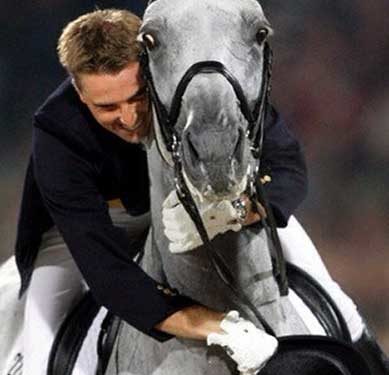



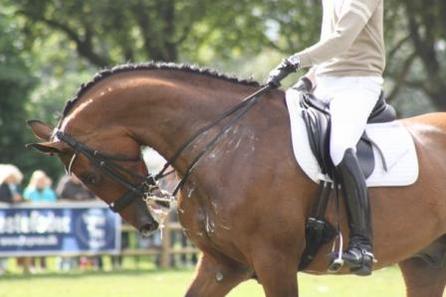
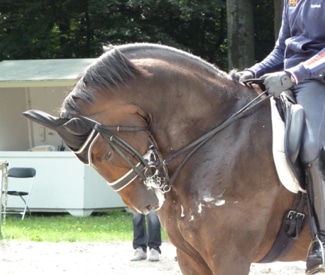






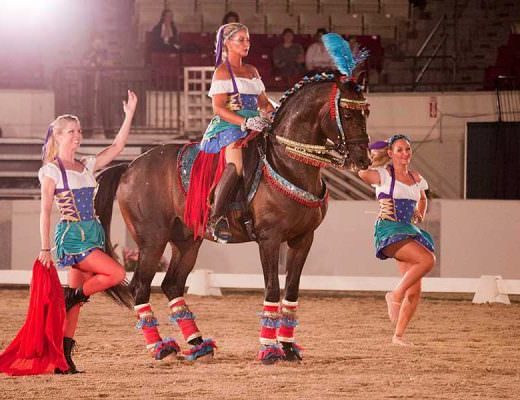
You are so right -images are powerful. How about carousel horses?-they always look wild with mouths agape? It’s somehow an acceptable state for an animal we “love” to be it but why? Most wouldn’t dream of doing these things to a dog or cat.
I agree regarding carousel horses, they are always depicted in what I would say are expressions of pain, fear and anger. It’s good to be mindful of these things so our subconscious can’t fool us into thinking it is normal, and good.
I’ve just joined and was appalled when l read that it was bad to produce frothing from the bit, l was so determined to treat my boy with kindness (l rescued him from abuse) and thought l had done everything gently. I was ready to go back to the articles l’d learnt from to see where l’d gone wrong when l decided to read on first and l’m so glad l did as now l know my boy is producing the ‘ good ‘ foam. (Huge sigh of relief!)
Thanks again for a great post! And Lauren I like your comment comparing to the dog and cat
I wonder what you think of UK Dressage rider and trainer, Carl Hester. He is my most admired trainer, and seems to have great common sense, honest training methods and wonderful horses. Wondering what your opinion is …
My personal opinion is that anyone doing well (favored by Judges) at that level of Dressage right now, is drinking the kool-aid so to speak. I’ve seen his work and it’s clear he uses hyperflexion, though what I’ve seen of his public displays it isn’t as physically aggressive as some other riders use. Still, it’s there.
I always suggest you watch videos of these riders’ demonstrations with the audio off. Use only what you see to influence your opinion of them, because a lot of them are very good at selling you ideas with their words, while their actions are in direct conflict. Use your eyes.
You can feel it in your hands and your horse’s body through your saddle.
We know, (or should sense) when our horse is content, relaxed, simply enjoying his work.
Loved comment about having rider bend her own neck like she bent the horse’s neck!
You can feel it in your hands and your horse’s body through your saddle.
We know, (or should sense) when our horse is content, relaxed, simply enjoying his work.
Loved comment about having rider bend her own neck like she bent the horse’s neck! GENTLE =LIGHT HANDS
Please explain your comment ‘I’ve seen his work and it’s clear he uses hyperflexion’ and justify how you arrive at that assumption?
http://www.writingofriding.com/in-the-media/carl-hester-dont-bash-totilas/
Very well written, it’s wonderful to see people becoming so mindful 🙂
This is a good post to bring to light the “beauty” of abuse. What is a real shame is that amateurs like me tend to look up to the higher level competitors as guide/inspiration – then when you realize they are overflexing, using harsh bits, etc. etc. etc… suddenly, they’re not so much of an inspiration! Sadly, judges reward harsh “performances” because it appears beautiful.
All I usually see, in any discipline, is horses being forced, cranked, yanked, pulled, and spurred into positions – you see it across every discipline, from highest level reiners to dressage to jumpers and more.
Don’t be too harsh on yourself Amanda, it is normal in any field to look up to those we see as being the top achievers – particularly if there are competitions. It’s good to realize everyone is human – even those top competitors – and humans all have a wide-variety of motivations for their actions that aren’t always in the best interest of anyone but themselves.
It’s good to just keep your eyes open, look for what’s good in a ride and take that home to work with. Throw the rest out and keep making progress at your own pace. 🙂
This is so very very true! I am a sculptor and always looking for new exciting poses for making horse sculpture. It is very difficult as an exciting pose for a piece of sculpture could make acceptable what like you I see as totally unacceptable! I am very aware of it! Thank you for a great post; I have now subscribed to your blog and look forward to more pertinient writings!
Thanks for sharing Carolyn, and yes there can be a fine line. I think a dramatic pose in a horse who’s solo – one who isn’t being influenced by humans – is fine and normal and beautiful. But when they are dramatic in the company of humans there’s often other driving forces behind it.
Checked out your website and beautiful work! 🙂
Cheers,
Erica
It´s quiet clear that in terms of equestrian art and riding we, as a race, have gone back and not forward. Back in the RESPECT we should have for horses and forward in the tricky ways we try to control them when, in most cases, we don´t even try the simple before we go to the hard. It´s a mankind problem, wars have started due to diplomatic inabilities so why would dressage not have monsters on saddles that look great for the picture and for the feeding company PR shots?
I totally support Nevzorovs radical view on banning sports, at first I didm´t because, well, I thought it was just to radical but when you look deep in the rabbit hole you do realize that there is no sport without abuse and not only because of bad owners, trainers or riders but because the rules for the sport themselves actually allow and include hyper flexion (as an exemple) in their training books when it should be completely ban even as a stretching exercise (unless the horses does in on his own while free lugging). So, my view is – ban equestrian sport as it is altogether. Here´s what you can sign to make it happen or at least speak your voice: http://www.gopetition.com/petitions/against-equestrian-sport.html
See you soon
Diogo Castiço
Also be careful not to exaggerate what you want to see. There is nothing wrong with the black horse who looks a lot like Sal standing there. Horses can become uncomfortable in competition settings and chew on the bit as a result. Rather then criticizing other riders why don’t you show us perfect images of you riding?
The problem with “show us what you can do” arguments
Competitive riders should dismount at the end and salute the horses. They are the ones who deserve it.
I find this “opinion piece” not only void of fact, but also relatively inaccurate. First, horses that are behind the bit or short in the neck are not necessarily being trained that way (or in rollkur), nor is being too short in the neck necessarily abusive. It is not ideal yes, but it is also not abusive unless the horse is having trouble breathing or is severely stressed. Horses differ in their conformation making some more likely to be short in the neck or behind the vertical and many riders are aware of the problem and working to correct it regularly. Riders are not perfect and we are often working to correct our flaws as we go. Additionally, some horses get tighter at shows and thus these pictures may not be reflective of how the horse is trained. Second, you (nor anyone else) should be making evaluative judgements about a horses happiness based on their eye expression at a single moment in time snapped in a photograph. I and many others would disagree with you about your interpretation of many of these horses eyes or expressions (the dark bay horse for example looks perfectly fine). Similarly, it is ridiculous to think that you can make an evaluative judgement about the riding or happiness of the Freisian horse based on the blurry photo you provide. I realize you mean well and your overall point is a good one (and I too hate to see photos with horses mouths gaping open presented as correct riding), but the way you are going about making your point based strictly on your opinion of random photos and not on any real substance is worrisome. Furthermore, I find it hard to believe that you were present for these rides to make holistic judgements… or even have permission to use most of these photos. There is a right way and a wrong way to make good points about the current state of dressage training. This is definitely in the range of the wrong way.
I think you missed the point of the post.
Thank You Erica for standing up for our horses. From my heart to yours.
Thank you! It’s really unfortunate when we see writers who are trying to spread a good message (which this author is undoubtedly trying to do), but are using unsound (factually incorrect, based on subjectivity, etc) methods and evidence. All this does is feed those who are already rabid about something, and turn others sour who might have been convinced to change their minds by a powerful, factually-based argument. Poorly constructed pieces like this turn even ME sour, and I’m incredibly anti-rolkur/harsh training/competition methods.
Preach it sista.
While I want to stop rollkur as much as the next person, this peice is just nonsense. Random photos, most of which dont even show a rider, saying that the rider is abusive. Context is so important.
Gain some facts and first hand information rather than just cherry picking random photos from google that suit your agenda.
I have volunteered and ridden at a Horse Rescue for the past 5 years. We have been moving to all Natural Horsemanship techniques. All the riders/horses have now transitioned to using NO Bits at all. The girls still win ribbons, the lesson horses are happy, and the newly rescued horses from the slaughter lots realize that humans really aren’t evil after all. One of my favorite moments was the Shock on the Judges faces after a show when they were informed that the first place dressage winner was riding a rescued mustang with no bit!! It was amazing, until we saw firsthand how ingrained this bad horse culture is. The judges actually checked the rule book to see if they could find any rule she might have broken. Obviously they could not, and they had to present her blue ribbons red in the face! Ribbons are now displayed proudly next to the pictures of the horses who have been adopted and found Forever Homes full of love ❤️ I hope you all consider learning more about Natural Horsemanship. Take a small class/clinic, or just read an article. Or
like above, throw on that bareback pad and head out for fun! Happy riding to you all!
Huge Kudos to you Kimberly, so wonderful to hear equestrians who are making progress at methods that are more humane for the horse and sharing it with the next generation of riders!
While I agree completely with what you say, I do disagree with some of your interpretations of a few of the images. A picture is one moment in time, and may not accurately depict the entirety of the situation. I ride Iberian and Iberian cross horses, and they have a very natural inclination for flexion, even at liberty. I have seen images of my own horses looking quite overflexed on a loose, droopy rein. And, I sure don’t get to ride often enough for this to be a ‘habit’ from otherwise constant use of heavy aids. I was quite surprised and taken aback by images of my main riding horse with his mouth agape. He was always so light and responsive, and we always were complimented on our relationship. He really seemed to enjoy his work. To be sure, I need to improve my riding, and strive to do so, but I had no idea he was doing this until I saw the images. I will also play the devil’s advocate, just a little, to say we need to be careful to look at the entire situation when a horse is hard at work. Perhaps similar to us frowning and sticking our tongues out when engrossed in a mental or physical task, the horse may make intense ‘grimaces’ as well. Now, I do worry what is really going on with my horses when they pull such faces, believe me. It is of the utmost importance that my equine partners enjoy our interactions and the training and work to which I put them. I believe it is our moral obligation to treat animals (and each other) with kindness and concern for their welfare. This would include taking care in judging ‘one moment in time’, as it may not reflect the whole.
Thanks Carey, however the ‘moment in time’ argument doesn’t apply here. The general public or new riders are not going to look at these images and think “oh, but that’s just a moment in time”, instead they’re going to be trained from day one to expect horses to appear this way in person. The rest of us who know that it may just be a moment in time need to become more discerning about what images we put out to the world to represent how a horse should be ridden, trained and treated.
Most images of the horse show them in pain, afraid, ridden badly. That becomes the baseline of expectation of how horsemanship should be done for people who are exposed very little to the horse world, or first getting their feet wet. And the only way their expectation changes on how a horse should be trained, ridden and treated, is through a long and arduous learning process. And let’s be honest, most riders never start that learning process.
I trained Endurance horses. the only time any of my partners had their chin in their chests was for a treat.
I love a low head set and no tail swishing.
Even on my pasos and Arabs.
I had an ornery mare, who liked being a bit witchy at times with her previous owners…
never so when I loosened her reins and let her run. and she was force fed dressage training far too young for an arabian.
by 11 she was so sway backed it was sad.
I purchased her then.
After 3 people were put in critical condition because they were afraid of her having her head.
this is her years after I rescued her, giving a riding lesson to a first timer. she was the black.
No helmet? riding bare legged? a first lesson? I think not.
Total BS!!!
Know what you’re talking about the horse did not have an injury due to dressage her injuries were off the trailer and her injury that killed her was infield you don’t know what you’re talking about she was pregnant at the time and she was out and passed her and she broke her leg I hate people who write articles that they don’t know anything about what they’re talking about
http://www.eurodressage.com/equestrian/2010/01/25/blue-hors-matine-died-unexpectedly
Really good commentary. Now let’s cover western riding and natural horsemanship. Don’t get me wrong. Definitely not defending “dressage”.
Thanks! And for sure, I don’t poke just at dressage. Harm to the horse isn’t exclusive to any discipline; it’s a disease that affects all equestrian sports and hobbies.
I agree. Cannot stand to see the death grip on the reins! I have also been researching physical problems caused by this over bending of these horses.
Mega esophagus seems to becoming more common in Freisan breed. Read an article about a study done. Don’t know if they have done one using other breeds but I noticed the angle preferred by riders of this breed.
I think you’re referring to this study, however reviewing the summary it appears to be (at this time) largely linked to a genetics in the Friesian breed. I wasn’t able to track down any other scientific studies into the cause of megaesophagus outside of the Friesian breed so can’t comment further on it’s prevalence.
I remember watching a video of Blue Hors Matinee a fee years ago. It was a winning Kurr at, I think, the WEG. I remember, then, commenting in the tension and tail wringing I saw. All most people saw was a horse dancing to music.
Yep, it’s still making the rounds as being this great, inspirational ride to music; all I see is a tense and unhappy horse. I had watched some video from the warm-ups to that ride as well and it was the typical yank, spank and spur. Very sad, but as people are used to seeing tense and unhappy horses marketed to them, why would this ride stand out as being anything other than a great partnership? People will typically believe what is being sold to them, to the detriment of the horse.
I think it would be advantageous to include correct photos in addition to the incorrect ones. Instead of just showing what is wrong it might help to also include what to strive for 🙂
I do post visual inspiration posts here when I have the time. 🙂 Unfortunately it is still the standard that poor images of horses riding are more easily found than great ones.
Here are a few:
all the way up to ” Frothing is a dead give-away that the rider is doing something very wrong,” I could go along with much of it.
But this is just plain incorrect. Froth in the horse’s mouth is more often a sign of a soft mouth and good. hands. I’ve had many horses who froth when they are happy, hungry, anticipating the bit, enjoying grooming, etc.
A colt who starts frothing as soon as he’s introduced to a bit almost always has a naturally light mouth.
Although it is true that some of these horses are clearly unhappy/tense/overbridled, it is ALSO true that not every horse that is overbent has been pulled into that position by a bad rider. Not all the horses the writer claims are “scared” or unhappy are scared or unhappy. No every open mouth is a sign of pain or discomfort. Flash cavesons and double reins are not evil.
And total BS about the capriole rider. He is NOT hurting that horse’s mouth and there is no evidence that his seat is poor.
I can’t even look at these, they are so disturbing.
We must always be the advocate for the animal and its well-being.
Human ego needs to be checked at the barn door.
Erica, I know you and I know your eye, your expertise and understanding of biomechanics. So bravo for the article.
For those criticizing…..sigh….aren’t we passed that now? With the advance in the study of biomechanics we can no long argue that working behind the vertical, in any way, is ok. We cannot argue “it was just a photo in a moment of time” because we can see what is going in the muscles of the body and face. We know what that means. We know what a bit does to the mouth, the jaw and face. We know that the curb rein is supposed to be slack. We know a flash has no purpose and only causes pain and tension in the face and neck. We know the strain and damage the “sport” horse goes through. We know that a lot of foam around a horses mouth when behind the vertical is because they cannot swallow…….Need more? There is no more opinion on this. It is all based in fact. Yet we continue to argue, to defend the human. If anyone needs this proved to them buy and read the book written by the esteemed German rider and equine veterinarian Dr. Gerd Heuschmann: Tug of War: Classical Versus “Modern” Dressage: Why Classical Training Works and How Incorrect “Modern” Riding Negatively Affects Horses’ Health.
Bravo again Erica for always speaking for the well being of the horse.
atheletes while hiding our heads in the sand.
Great article and thank you for pointing out what is obvious to those of us who have paid attention, read some studies and articles and done some real, science based studying of our equine friends. Those photos depict real pain—moment in time or not. No horse deserves to be ridden that way at any time for any length of time. Let the riders prance around with their heads tucked to their chins, a steel bit in their mouths, spurs on their rib cage, whips pushing them on. There wouldn’t be any hugging to be sure.
I’m curious what qualifies you to be making such sweeping judgements about a photo…is it your “love of horses since you were 9,” or the fact that you own 2 horses and a dog?
How about giving the credits we are they are doing instead of just stealing them off the Internet? Or don’t the rules of copyright apply to you? And since you weren’t there when all of these images were taken, right, you know exactly what was going on at the instant the images were captured, right? Therefore making you perfectly correct in every single interpretation. Right? Stop stealing other people’s work and using it without giving appropriate credit.
But where is the solution? If you’re going to educate people on what bad looks like, shouldn’t you provide them a solution to that problem—what the good looks like—as well?
Are you for real? Posting pictures and comments of very different situations, types of horses, riders etc. and running them all through the same comb. So wrong to discredit some people who totally have the horse’s well being at heart and are fantastic horsemen/women. that is why so many good riders will not compete anymore….because of keyboard warriors like you!
Absolute abuse and NIL horsemanship! Riders need the same treatment!
I’m glad you clarified ‘Good foam’ & ‘bad foam’ I ride western (though i did dressage as a kid) I do a lot of bareback & bridleless work & my best mounts are often foaming up from licking and grinding their mouths a sign they are concentrating and paying attention to what I’m asking.